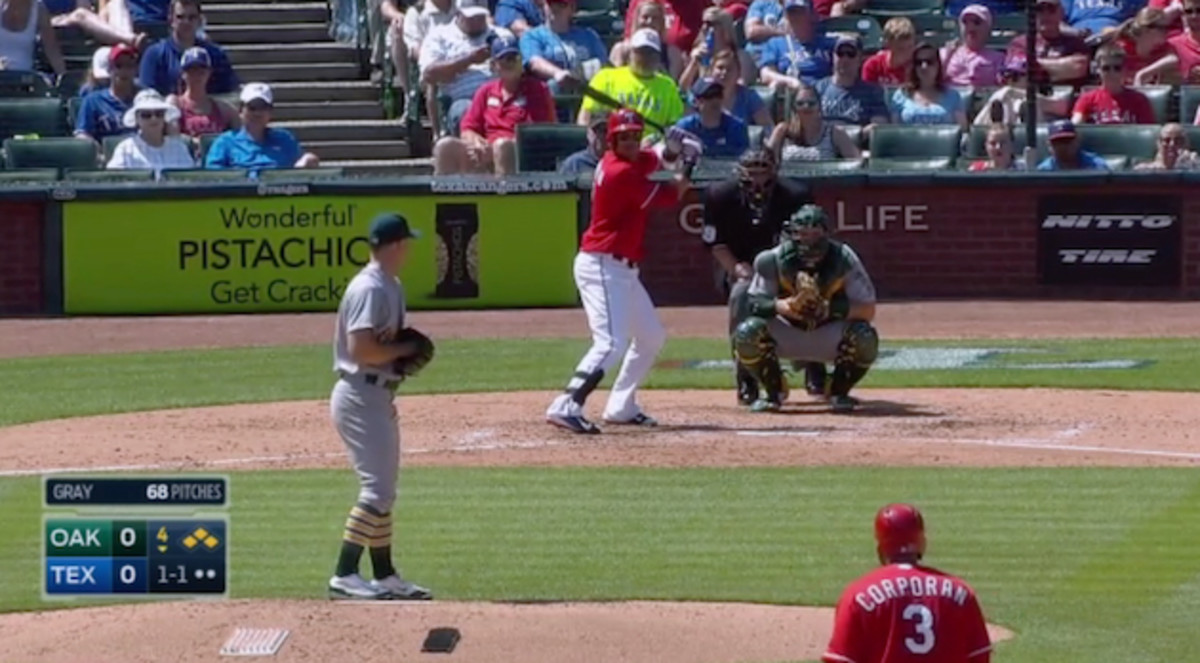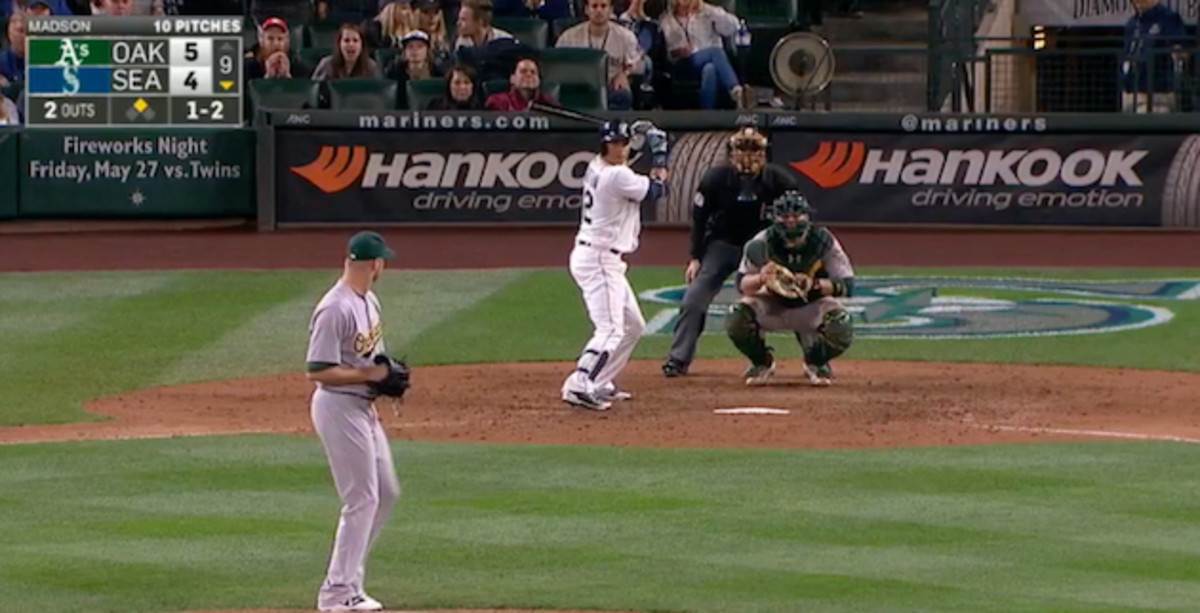Is Leonys Martin’s improvement for real? Take a look at his swing

Get all of Michael Beller’s columns as soon as they’re published. Download the new Sports Illustrated app (iOS or Android) and personalize your experience by following your favorite teams and SI writers.
Leonys Martin entered the 2016 season with 1,461 major league plate appearances, which translates to not quite three full seasons but a large enough sample to draw some conclusions. Batted-ball rates typically stabilize well before a hitter racks up that many trips to the plate, and Martin’s rates spoke volumes about him.
Despite a 6' 2", 200-pound frame, Martin hit grounders with the consistency of someone like Ben Revere. Across his first 1,461 plate appearances, Martin had a ground-ball rate of 50.7% and a fly-ball rate of 29%. He logged at least 310 plate appearances in all of the last three seasons, and his fly-ball rate was never within 17 percentage points of his ground-ball rate in an individual season. Over that time, his lowest ground-ball rate was 50.3%, while his highest fly-ball rate was 33%. Heading into his age-28 season, it was nearly impossible for Martin to be anything other than a ground-ball hitter.
• TRADE ADVICE: Why owners should buy in on Carlos Rodon
But something changed at the start of this season, Martin’s first with the Mariners. He hit three fly balls in the team’s second game of the season (Martin had three fly balls in the same game twice in his career prior to 2016) and hasn’t looked back. Through 167 plate appearances, Martin has a 43.8% fly-ball rate and 40.6% ground-ball rate. He also has a career-high (yes, already) nine home runs, a .483 slugging percentage and a .221 isolated slugging percentage that has him ahead of Mookie Betts, Andrew McCutchen and Edwin Encarnacion, among many other luminaries.
It’s hard to find much, if any, difference in Martin’s setup at the plate, even though we can assume that something has changed.
The first GIF is from last season, Martin’s worst in the majors, and the second is from earlier this week when he took Ryan Madson deep for a walk-off homer. He was a bit more open in his stance before this season, but that’s really the only difference. He has the same leg kick from year to year, and his foot comes down right as he starts his swing both seasons.
The answer, as it so often is, appears to be in his hands. First, look where his hands are when the pitcher begins his windup.


Martin’s hands are up high, basically at ear level, both years, but this season they’re a bit closer to his body. Now watch the following two GIFs, which are shortened versions of the ones from earlier, paying particular attention to his hands.
Last year, the first movement of Martin’s hands was down. He then had to bring them back up before starting his swing. This year, his hands go straight back as he strides, then come forward with all his weight behind them. The axiom that the shortest distance between two points is a straight line holds true while hitting. Last season, Martin’s hitch forced him to draw two invisible, perpendicular lines with his hands. This season, he’s getting straight to the ball. By making that simple mechanical correction, he has found the power that has likely always resided within his larger-than-average frame.
• What’s wrong with Goldschmidt? | Baseball’s longest hitting streaks
The proof is in the pudding, especially with respect to low pitches. From the start of his career through the 2015 season, Martin’s ground-ball rate on low pitches was 50.7%. This year, it’s 39.5%. His ISO on those same pitches before this season was .178. It’s up to .333 this season.
Martin’s calling card was always his speed, and he still has plenty of that. He has swiped eight bags this year, making him one of three players with at least eight homers and steals. The others are Jose Altuve and Mookie Betts. Despite that lofty company, Martin is still available in about seven of every 10 fantasy leagues. This is one of the greatest ownership injustices going in 2016. Martin’s ownership rate shouldn’t simply climb north of 50%. He should be on a roster in all formats.
